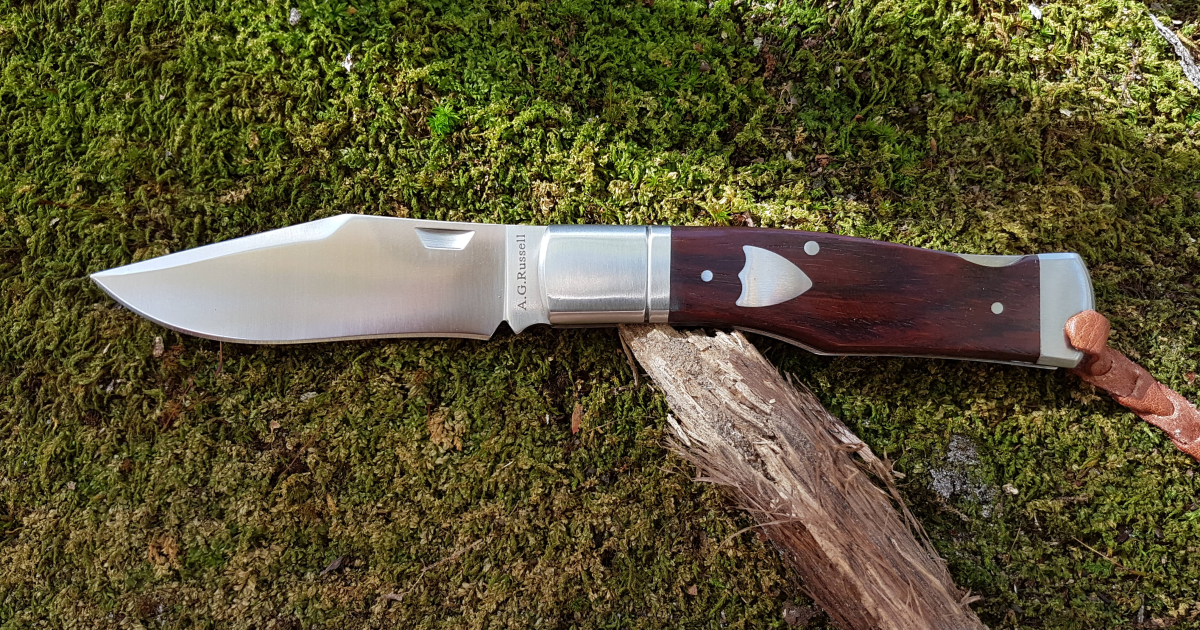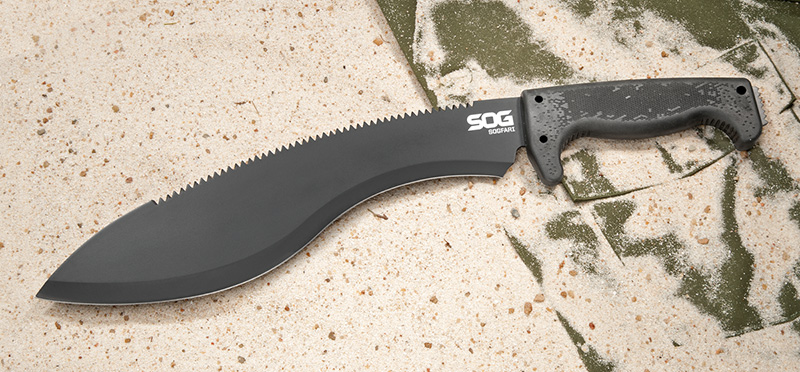Recurved Blade
When the edge of the knife is shaped like an S, it is called a Recurved blade. You can see in the Medium Gunstock pictured below, that after the belly the blade will curve back a little, and then widen out again. The blade itself is referred to as a Recurved Blade. The part after the belly where the edge shrinks into the knife is called the Recurve.
The recurve is useful for a few reasons. The recurve actually lengthens the edge without increasing the length of the blade itself. If your goal is slicing, more edge is always desirable. The recurve acts similarly to the belly - it presents an ever-changing angle to the material being cut. A good way to think of a recurved blade is as a very long, large serration. Recurved blades, like serrated blades, make excellent rope and twine cutting tools. I know a number of farmers who absolutely love the recurve style blade and use them on a daily basis, cutting the twine on bales of hay and all kinds of other cutting tasks.
In a bigger machete sized knife, a recurved blade can make for an excellent chopper for brushwork, foliage, saplings, and other clearing activities. While swinging, material that hits the recurve of the blade will then be forced along the belly of the blade. This makes for an extremely efficient cut as the material runs along the changing angles of the edge. For example if you were chopping vines, they would gather into the recess of the recurve, and through the swing they would then slide along the belly’s edge. You can see a good example of this in the Indian Kukri or similar style machetes such as the SOGfari Kukri Machete (pictured).
So if recurve blades are so efficient, why aren’t they more common?
Recurved blades have one drawback. They are very difficult to sharpen freehand on a stone.
For any handheld recurved knives, this problem is easily solved using rods to sharpen, such as the Ceramic Sharpener. For knives as big as the SOGfari Kukri Machete, you’ll have to use a smaller handheld stone and sharpen it in sections, or in larger sweeping motions if you can manage them. While recurved edges are harder to sharpen than straight edges, they are preferable to fully serrated blades for two reasons. First, recurved blades are easier to sharpen than serrated blades. Second, the plain edge allows for more precision cutting versus a serrated blade.
Some recurved blades have a subtler recurve, and some are more aggressive. I prefer knives that are a little more aggressive with their recurve. If you use a subtle recurve, you have the major drawback of being harder to sharpen, without the full benefit of the more efficient slicing an aggressive recurve will give you. In my opinion, a knife shouldn't have less recurve than the Gunstock, as I've seen some knives do. Any less and you are losing your advantages while still maintaining the disadvantage. There is no point in an almost straight blade.
Thanks for Reading!
Thank you all for reading my article on recurved blades. I hope you found it informative. Feel free to share it with friends. If you haven't read my previous article, click the Previous button below to read about the Blade Facing & Belly. My next article will come out next week. Feel free to Email Us or Facebook us if you have any questions or topics you'd like me to cover in the future.


